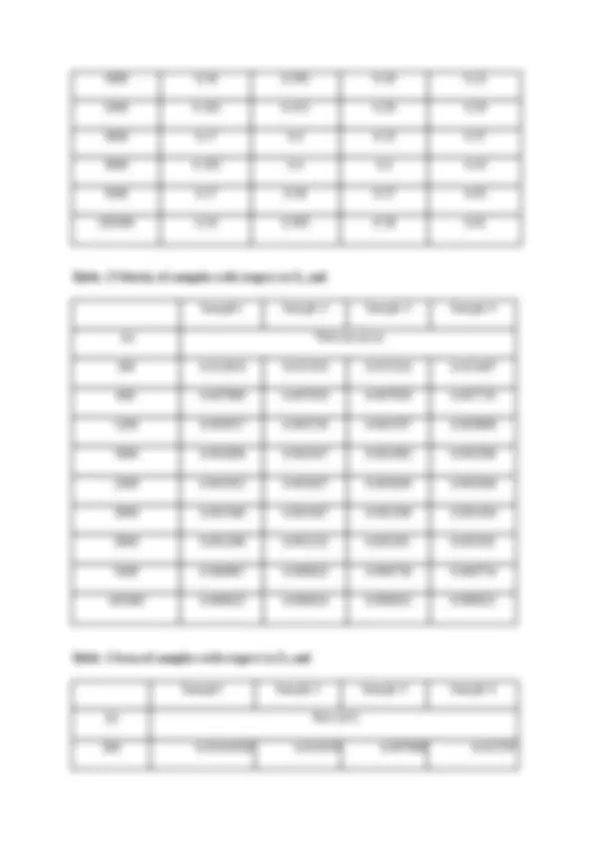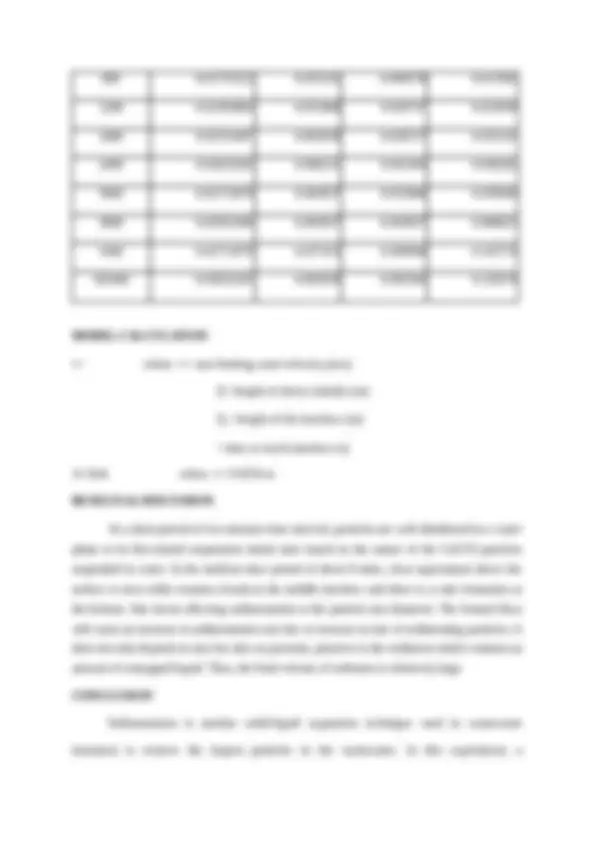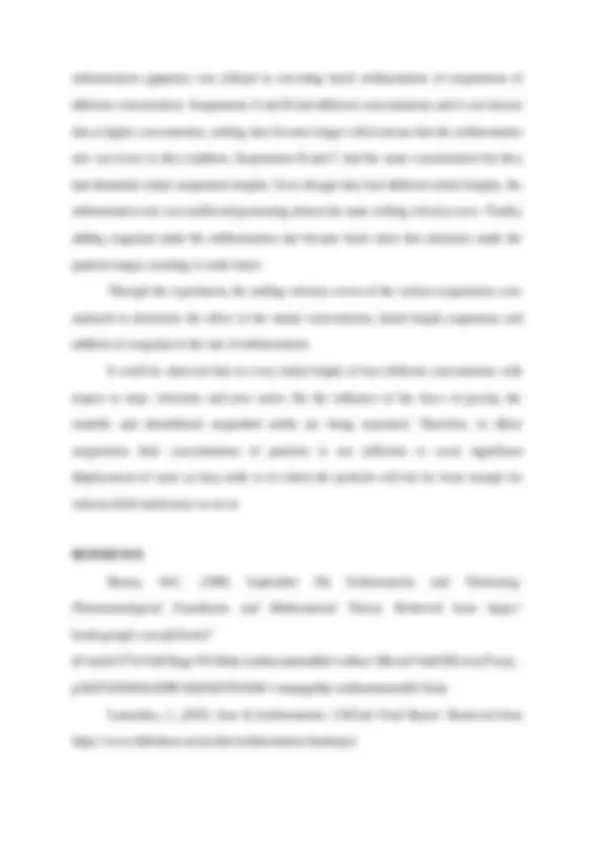





Study with the several resources on Docsity

Earn points by helping other students or get them with a premium plan


Prepare for your exams
Study with the several resources on Docsity

Earn points to download
Earn points by helping other students or get them with a premium plan
Community
Ask the community for help and clear up your study doubts
Discover the best universities in your country according to Docsity users
Free resources
Download our free guides on studying techniques, anxiety management strategies, and thesis advice from Docsity tutors
LABORATORY MANUAL WITH CONCLUSION
Typology: Study notes
1 / 6

This page cannot be seen from the preview
Don't miss anything!




ChE 536L – Chemical Laboratory 1 Experiment No. 7 Sedimentation INTRODUCTION Sedimentation is the process of deposition of solid material from a fluid, usually air or water, from a state of suspension. It is widely observed in nature in the formation of rocks and ore deposits. One important branch of Geology, Sedimentology or Sedimentary Petrology, studies the origin of rocks by this method. Sedimentation has also a great scientific and industrial importance, especially in the mining and chemical industry. (Bustos, 1999) The size and type of particles to be removed have a significant effect on the operation of the sedimentation tank. Sand or silt can be removed very easily because of their density. The velocity of the water-flow channel can be slowed to less than one foot per second and most of the sand and silt will be removed by simple gravitational forces. In contrast, colloidal material (small particles that stay in suspension and make the water seem cloudy) will not settle until the material is coagulated and flocculated by adding a chemical, such as iron salt or aluminum sulfate. The shape of the particle also affects its settling characteristics. A round particle, for example, will settle much more readily than a particle that has ragged or irregular edges. All particles also tend to have a slight electrical charge. Particles with the same charge tend to repel each other. This repelling action keeps the particles from congregating into flocs and settling (Kocamemi, n.d.).
APPARATUS/MATERIALS Cornstarch Water Batch/Sedimentation Apparatus Stirring Rod
1000 mL Beaker
PROCEDURE
OBSERVATION/ RESULTS: Table. 1 Height of slurry and interface with respect to time
Sample 1 Sample 2 Sample 3 Sample 4 Z (^) i (m) 4.85 4.8 4.65 4. (s) ZL (m) 300 0.1 0.2 0.05 0. 600 0.11 0.22 0.06 0. 1200 0.15 0.325 0.13 0.
v= where: v= rate-limiting zone/velocity (m/s) Zi= height of slurry initially (m) ZL = height of the interface (m) = time to reach interface (s) A=2πrh where: r= 0.0254 m RESULTS & DISCUSSION At a short period of two minutes time interval, particles are well distributed in a water phase at its flocculated suspension initial state based on the nature of the CaCO3 particles suspended in water. In the medium time period of about 8 mins, clear supernatant above the surface is seen while remains cloudy in the middle interface and there is a cake formation at the bottom. One factor affecting sedimentation is the particle size diameter. The formed flocs will cause an increase in sedimentation rate due to increase in size of sedimenting particles. It does not only depend on size but also on porosity, preserve in the sediment which contains an amount of entrapped liquid. Thus, the final volume of sediment is relatively large. CONCLUSION Sedimentation is another solid-liquid separation technique used in wastewater treatment to remove the largest particles in the wastewater. In this experiment, a
sedimentation apparatus was utilized in executing batch sedimentation of suspensions of different concentration. Suspensions A and B had different concentrations and it was known that at higher concentration, settling time became longer which means that the sedimentation rate was lower to this condition. Suspensions B and C had the same concentration but they had dissimilar initial suspension heights. Even though they had different initial heights, the sedimentation rate was unaffected generating almost the same settling velocity curve. Finally, adding coagulant made the sedimentation rate became faster since this substance made the particles larger, resulting to settle faster. Through the experiment, the settling velocity curves of the various suspensions were analyzed to determine the effect of the initial concentration, initial height suspension and addition of coagulant to the rate of sedimentation. It could be observed that in every initial height of four different concentration with respect to time, velocities and area varies. By the influence of the force of gravity, the unstable and destabilized suspended solids are being separated. Therefore, in dilute suspensions their concentrations of particles is not sufficient to cause significant displacement of water as they settle or in which the particles will not be close enough for velocity field interference to occur.
REFERENCE Bustos, M.C. (1999, September 30) Sedimentation and Thickening: Phenomenological Foundation and Mathematical Theory. Retrieved from https:// books.google.com.ph/books? id=im3zGTTwVa4C&pg=PA1&dq=sedimentation&hl=en&sa=X&ved=0ahUKEwiw2Yuxje_ gAhXYdN4KHcdUBC4Q6AEITDAH#v=onepage&q=sedimentation&f=false Lamanilao, J., (2010, June 4) Sedimentation: ChELab Final Report. Retrieved from https://www.slideshare.net/jeufier/sedimentation-finalrepz